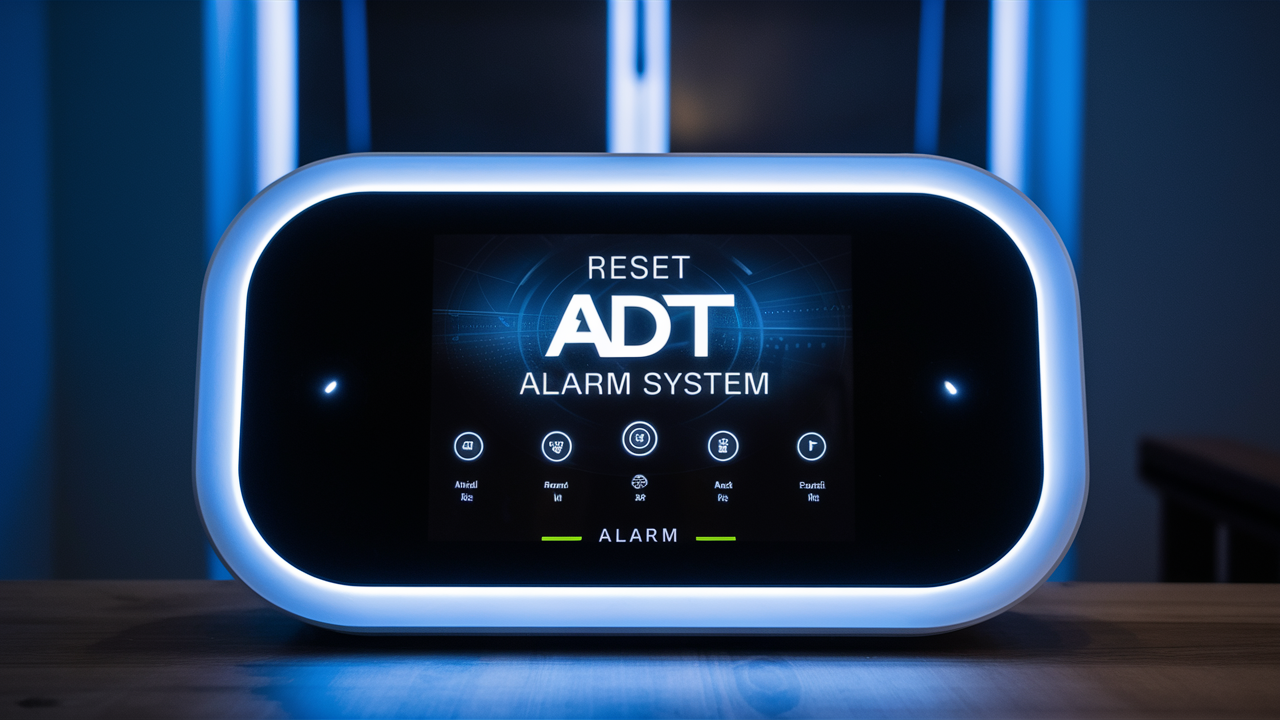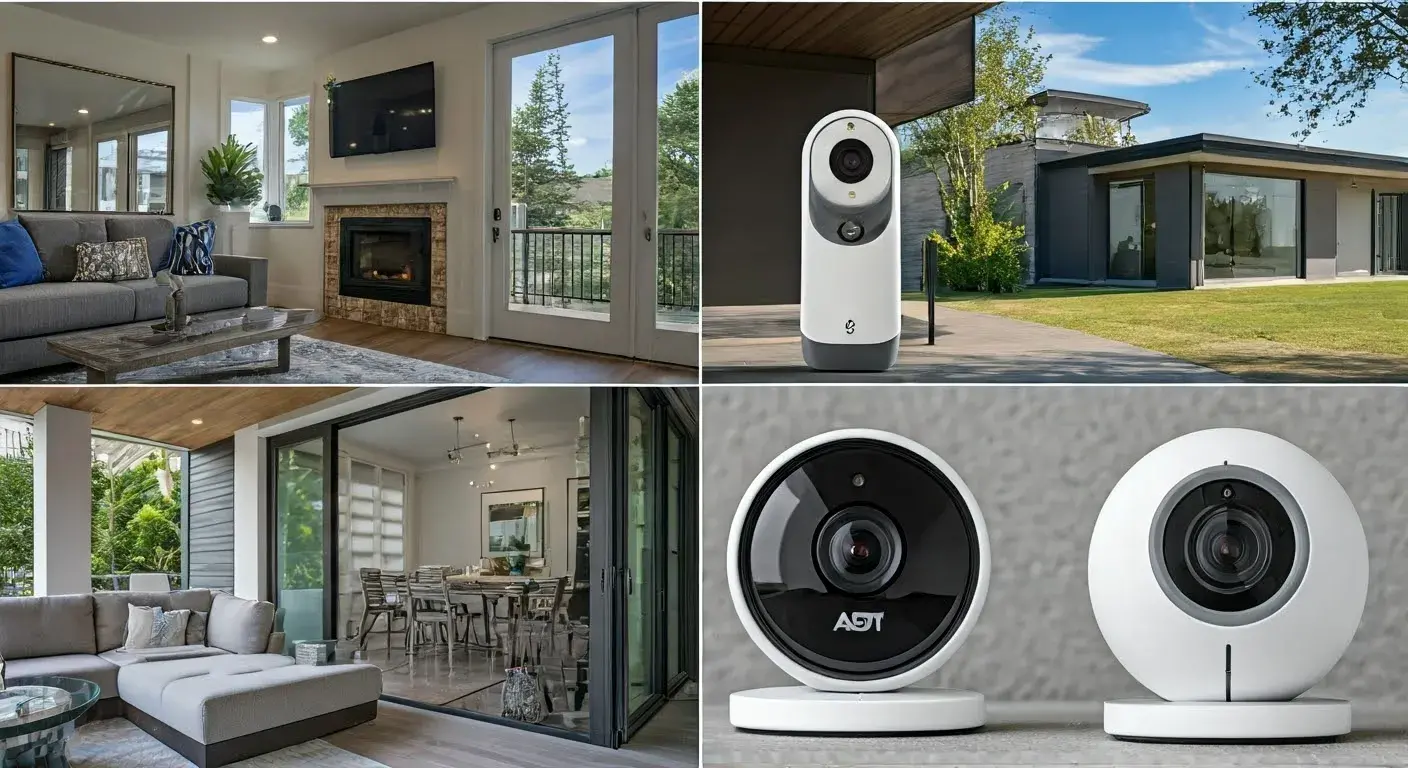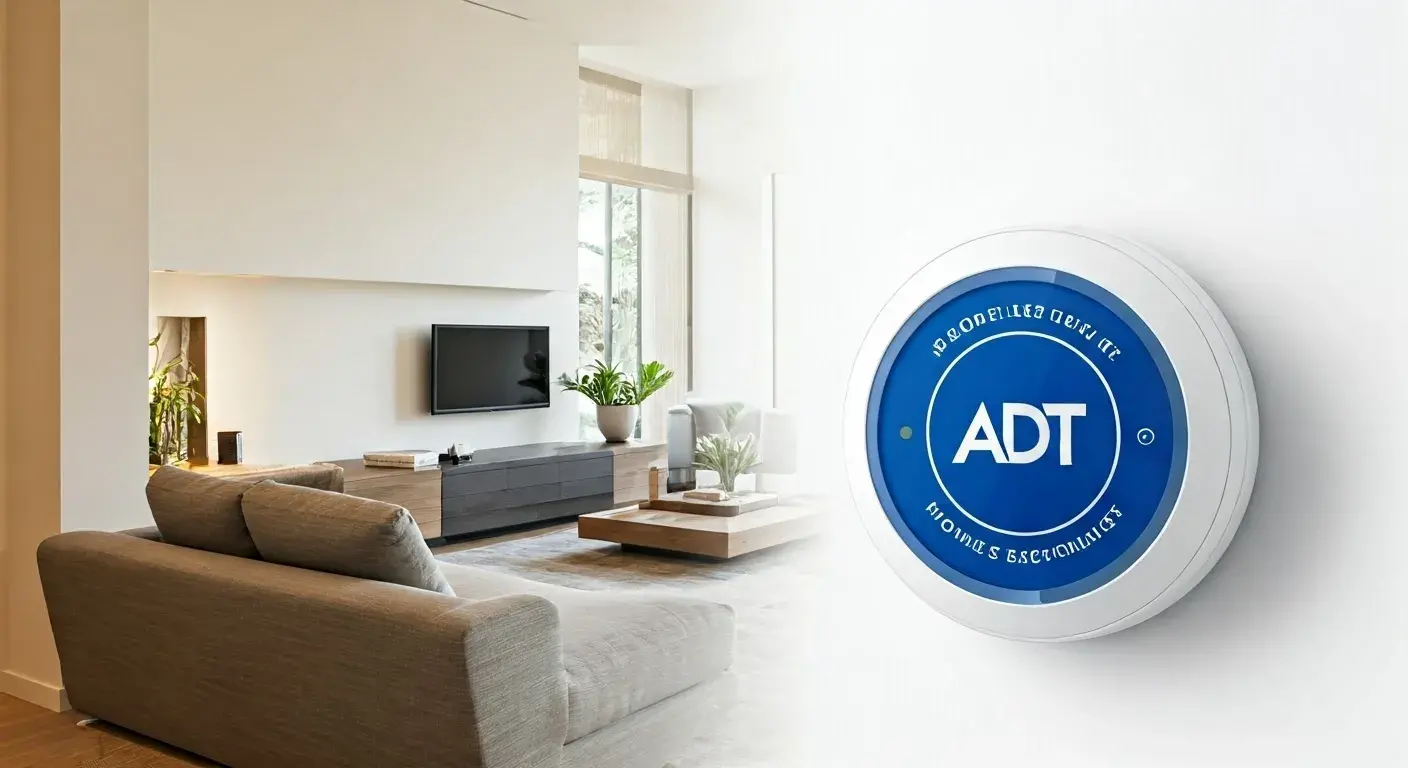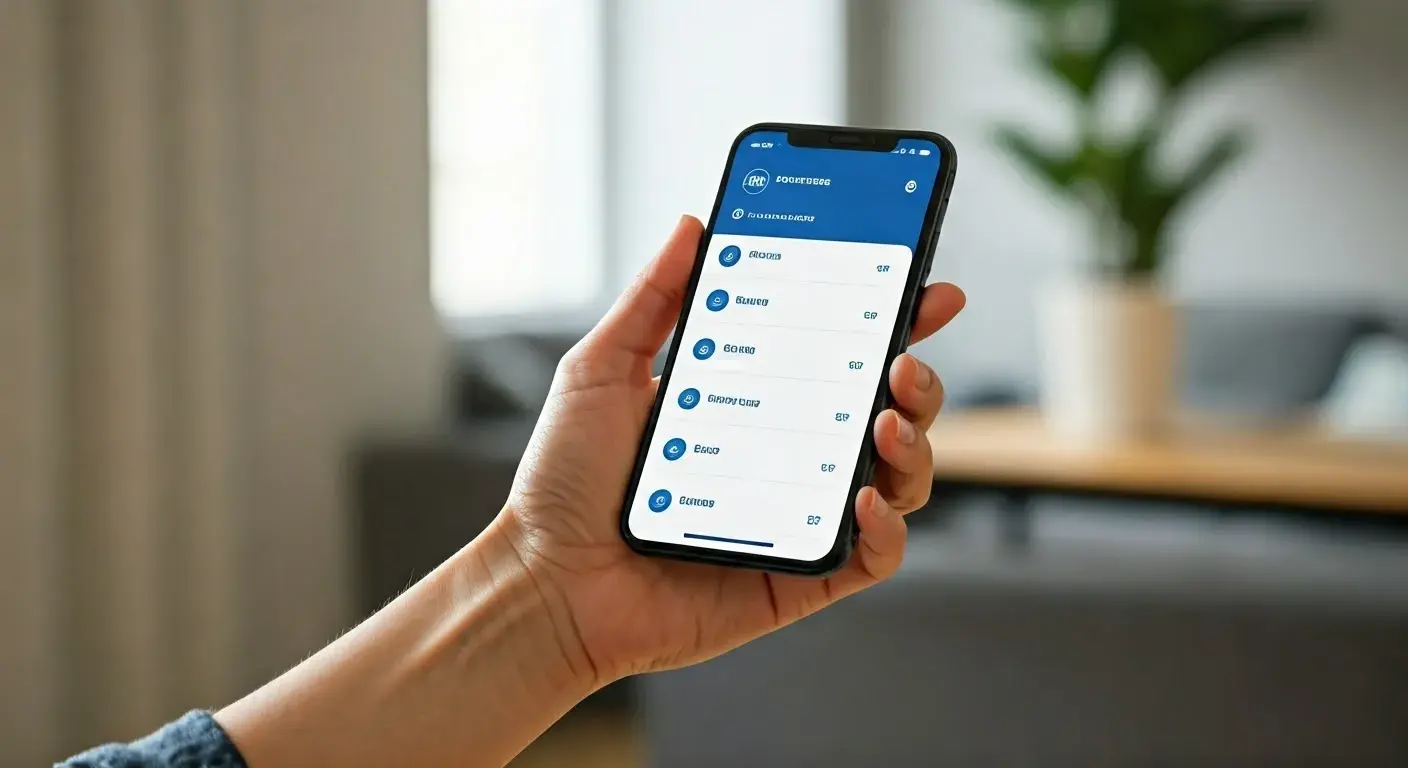Your ADT security system is a silent guardian, a sophisticated network of sensors and panels working around the clock to keep your home safe. But like any complex piece of technology, it can occasionally run into issues. A power flicker, a low battery, a forgotten code, or a simple glitch can trigger beeps, trouble lights, or an unresponsive panel, leaving you wondering, "How do I reset my ADT alarm system?"
Knowing how to properly troubleshoot and reset your system is a crucial piece of homeownership. It restores your peace of mind, ensures your home remains protected, and can save you time and potential service fees. This comprehensive guide is designed to walk you through the entire process. We will provide clear, step-by-step instructions for every major ADT system—from the latest ADT Command touchscreen to older Safewatch keypads. Whether you're dealing with a simple reboot after a storm or a more complex factory reset, you'll find the answers here.
Understanding Your ADT Alarm System: A Brief Overview
Before we dive into the reset procedures, it's helpful to understand the different types of ADT systems you might have. ADT has evolved its technology over the years, and the reset process can vary significantly between models.
Primarily, ADT systems fall into a few categories:
-
ADT Command: This is ADT's modern, all-in-one touchscreen smart home hub. It integrates security, video monitoring, smart home controls (like lights and thermostats), and voice control compatibility. It's typically controlled via the large touchscreen and the ADT Control app.
-
ADT Pulse: The predecessor to ADT Command, Pulse offers robust security and automation features through a web portal and a mobile app. Its base station often interfaces with keypads throughout the home.
-
Safewatch Pro Systems: These are often built on proven Honeywell technology (like the Vista series) and are characterized by physical keypads with numbered buttons. Models like the Safewatch Pro 2000, 3000, and V300 are common in many homes and are known for their reliability.
Most modern ADT systems are wireless, using cellular and Wi-Fi connections for backup, while some older installations may be hardwired. Regardless of your setup, the core principles of resetting remain similar: identify the problem, perform a simple reboot first, and only proceed to a full reset if necessary.
Why You Might Need to Reset Your ADT Alarm System
Homeowners don't just reset their systems on a whim. Usually, a specific symptom prompts the need for action. Common reasons include:
-
After a Power Outage: Even with a battery backup, the restoration of main power can sometimes cause communication or display glitches.
-
System Troubles or Faults: Your panel may display a "Check 103" error, a "System Trouble" message, or a "Zone Fault" alert that needs to be cleared.
-
Persistent Beeping: A constant, low-battery beep or a trouble beep from the keypad or a sensor is a common cry for help.
-
False Alarms: If your alarm is triggering without cause, a reset can often resolve sensor communication errors.
-
Forgotten User Codes: If you've forgotten your master or user code, a reset may be required to restore access.
-
Network or Wi-Fi Issues: If you've changed your Wi-Fi password or router, your ADT system will need to be reconnected to the network.
-
Moving into a New Home: Resetting a previous homeowner's ADT system is essential to ensure your security and privacy.
-
Unresponsive Panel or Keypad: When the touchscreen or buttons stop responding to commands.
Important Precautions Before You Begin Resetting
Your security system is your first line of defense. Tampering with it incorrectly can temporarily leave your home unprotected. Please keep these critical safety tips in mind:
-
Inform Your Monitoring Center (If Necessary): If you are performing an action that might trigger an alarm, such as a full factory reset, it is wise to call ADT customer support beforehand to place your system in "test mode." This prevents unnecessary emergency dispatches.
-
Understand the Terminology:
-
Reboot: A simple power cycle. This turns the system off and on again, clearing temporary glitches without deleting your settings. This is always the first step.
-
Reset: This can mean clearing a specific trouble condition or restoring normal operation.
-
Factory Reset: This wipes all your custom settings—codes, sensor names, schedules—and returns the system to its original, out-of-the-box state. Use this as a last resort.
-
-
Some Resets Require Professional Help: Certain functions, especially on older systems, require an "installer code" that only ADT technicians possess. If your DIY efforts fail, calling support is the next logical step.
Step-by-Step Guide: How Do I Reset the ADT Alarm System?
This section is the core of our guide. Find the system that matches your equipment and follow the steps carefully.
1. Resetting the ADT Command Panel
The ADT Command panel is intuitive, and most resets are straightforward.
To Reboot/Restart Your ADT Command Panel:
-
Locate the power connector on the back of the Command unit and unplug it from the wall outlet.
-
Next, carefully disconnect the backup battery connector from the main unit.
-
Wait for 30-60 seconds. This allows the system's internal capacitors to fully discharge.
-
Reconnect the backup battery first, then plug the power cord back into the wall.
-
The panel will take a few minutes to boot up. This often resolves temporary freezes and connectivity issues.
To Reset User Codes or Wi-Fi on ADT Command:
You don't need to reset the entire system to change a code or Wi-Fi network.
-
From the home screen, tap the Settings icon (often a gear symbol).
-
Navigate to Users to add, edit, or delete user codes.
-
To reset Wi-Fi, go to Settings > Advanced Settings > Wi-Fi. You may need your system's master code to access advanced settings. From here, you can select your new network and enter the new password.
To Perform a Factory Reset on ADT Command (Use with Caution):
A factory reset should be a last resort. This will erase everything and require a reconfiguration, often with help from ADT.
-
Go to Settings > Advanced Settings.
-
Enter your system's Master Code.
-
Navigate to System Information or System Reset.
-
Select Factory Reset or Default System. Confirm your choice.
-
The panel will reboot and begin its initial setup wizard.
2. Resetting the ADT Pulse System
Resetting an ADT Pulse system often involves both the physical panel and the online portal or app.
Rebooting the ADT Pulse Panel (Base Station):
-
Unplug the power transformer from the wall outlet.
-
Locate and disconnect the system's backup battery.
-
Wait for 60 seconds.
-
Reconnect the battery, then plug the power back in.
-
Allow the system 5-10 minutes to fully reboot and re-establish connections with all sensors and the cellular network.
Resetting Through the ADT Pulse App/Portal:
The ADT Pulse app is excellent for clearing many trouble conditions. For example, if a sensor shows a "low battery" or "supervision fault," replacing the battery and then using the app to "refresh" or "rediscover" the sensor can often reset its status.
Factory Resetting ADT Pulse:
A full factory reset of an ADT Pulse system is complex and typically requires an ADT technician, as it involves the installer code. It's strongly recommended to call ADT support for this procedure.
3. Resetting the ADT Safewatch Pro System
These systems use physical keypads (like the 6150, 6160 models) and are menu-driven.
Clearing Trouble and Service Lights:
-
Press the [✻] (star) button on the keypad.
-
Then, press [1] to access the "Zone Status" menu.
-
The keypad display will show any faulted zones (e.g., "Zone 1 Fault"). Note the zones.
-
Press [✻] again to exit the menu.
-
Often, simply viewing the status can clear a temporary fault. If the trouble light remains, the underlying issue (e.g., an open door, a low battery) needs to be fixed.
Rebooting the Safewatch Pro Panel:
-
Locate the main control panel, which is usually in a closet, basement, or attic. It's a metal box.
-
Unplug the transformer from the wall.
-
Disconnect the large, rechargeable 12V backup battery inside the panel.
-
Wait 60 seconds.
-
Reconnect the battery, then plug the transformer back in.
-
The keypad will take several minutes to initialize.
4. Resetting a General ADT Keypad
For keypad-specific issues, like an unresponsive or frozen display.
-
Check the Power: Ensure the keypad has power. If it's wireless, the battery may be dead. If it's wired, a connection may be loose.
-
Soft Reset: Try pressing the [OFF] or [#] button to see if it responds. Sometimes, entering your master code can wake it up.
-
Reboot the Entire System: As described above, rebooting the main control panel will also reset all connected keypads.
5. Resetting After a Power or Wi-Fi Failure
Power outages are a leading cause of ADT system issues.
-
Remain Calm: The system's battery backup should keep it running for several hours. When the main power returns, the system may beep or show a "AC Loss" or "Power Trouble" message.
-
Let the System Stabilize: Once power is restored, give the system 15-30 minutes to recharge its battery and re-establish a stable state. The trouble message may clear on its own.
-
Manual Clearance: If the message persists, you can often clear it by entering your master code and pressing the [OFF] button. On a Command panel, you may be able to swipe the notification away.
-
For Wi-Fi: After a router reboot, your ADT system should automatically reconnect. If it doesn't, you will need to manually guide it through the network settings menu on the Command panel or keypad, as described earlier.
How to Reset an ADT Alarm Without a Code
This is a common and stressful situation. If you've forgotten your master code, your options are limited for security reasons.
-
Try Default Codes: In some cases, especially with older systems installed by previous homeowners, the default master or installer code might still be active. Common defaults include 1234, 2222, 2580, or 1000. This is a long shot and a major security risk if it works—you must change the code immediately.
-
The Physical Key Method: Some ADT keypads have a small lock and key. Using the physical key to turn on the system can sometimes bypass the need for a code to disarm it, but it will not reset the code itself.
-
The Hard Reset (and its Consequences): Performing a full factory reset (as shown in the ADT Command section) will wipe all user codes, including the forgotten one. However, this will also erase all other system programming. On many older systems, a factory reset requires the installer code, which you do not have.
-
Call ADT Support: This is the most reliable and secure solution. After verifying you are the account holder, an ADT support representative can remotely reset your code or guide you through a procedure to restore access. This is the recommended path for most users.
Troubleshooting Common ADT Alarm Problems
Often, a full reset isn't needed. Here’s how to tackle specific error messages.
-
"System Trouble" or "Zone Fault": This indicates a problem with a specific sensor (zone). Check that all doors and windows are closed. The specific zone number will be shown on the keypad. A "Zone Fault" often means a sensor has been tampered with or broken.
-
"Comm Failure" or "Check 103 LngRng Radio": This means the system cannot communicate with the ADT monitoring center. A simple reboot of the main panel often resolves this. If it persists, there may be a cellular network issue or a problem with the communication module, requiring an ADT technician.
-
False Beeping Alarms: Identify the source. A constant beep from a sensor usually means a low battery. A beep from the main keypad every 30-60 seconds indicates a system trouble (like "AC Loss" or "Low Battery" in the main panel).
-
"Battery Replacement" Notifications: Replace the battery in the specific device (sensor or keypad) promptly. The system should automatically detect the new battery and clear the message.
-
Connection Lost to ADT App: Check your phone's internet connection. Then, reboot your ADT Command or Pulse panel. If the problem continues, log out and back into the app.
Resetting Your ADT Alarm After a Power Outage
This scenario is so common that it deserves its own deep dive. A proper ADT alarm reset after a power outage involves a sequence of actions.
-
Initial Reaction: When power is restored, your panel will likely beep and display "AC Loss" or "Power Trouble." This is normal.
-
Allow for Auto-Recovery: Do nothing for the first 15-20 minutes. The system needs time to recharge its internal battery and re-sync with sensors.
-
Clear the Message: After the waiting period, the message may remain, but the beeping should stop. On a keypad system, enter your master code and press [OFF]. On a Command panel, you may need to swipe the notification away or acknowledge it.
-
Check the Time and Date: Power outages can reset the system clock. Navigate to your system's settings to ensure the time and date are correct, as this is crucial for accurate event logging.
-
Test the System: Once the trouble message is clear, arm your system in "Stay" mode and walk in front of a motion sensor or open a protected door to ensure it triggers the alarm correctly. Disarm it immediately to test full functionality.
Resetting Batteries and Sensors
Individual components sometimes need a reset after the main system is tampered with.
-
Resetting Door/Window Sensors: After replacing the battery, the sensor should automatically re-sync with the panel. If it shows a "supervision" fault, trigger the sensor (open and close the door/window) a few times. For persistent issues, the panel may have a "Sensor Rediscovery" or "Learn Mode" in its advanced settings.
-
Resetting Motion Detectors: Similarly, after a battery change, the motion detector should reconnect. You can wave your hand in front of it to trigger its test LED, confirming it's active. Placing the main panel into "Test Mode" via the ADT app or by calling support can help you troubleshoot without triggering false alarms.
When to Call ADT Support
DIY is great, but know your limits. You should call ADT professional support when:
-
All troubleshooting and reset attempts have failed.
-
You see persistent "Comm Failure" or "RF Jam" errors.
-
You need to perform a factory reset, but you do not have the installer code.
-
You have a persistent zone fault that you cannot locate or fix.
-
Your system is physically damaged.
-
You are uncomfortable performing any of these steps.
You can reach ADT Customer Support at 1-800-ADT-ASAP (1-800-238-2727). Live chat is also available on their official website. If a technician visit is required, there may be a cost associated with it, depending on your service plan and the nature of the problem.
Preventive Maintenance Tips for Your ADT System
An ounce of prevention is worth a pound of cure. Keep your system running smoothly and avoid frequent resets with these tips:
-
Regularly Test Your System: At least once a month, arm your system and test a different sensor each time. Inform ADT that you are running a test.
-
Proactive Battery Replacement: Don't wait for the low-battery beep. Replace batteries in sensors and keypads every 2-3 years. The main panel's backup battery should be replaced every 3-5 years.
-
Keep Firmware Updated: ADT often pushes updates to Command and Pulse panels automatically. Ensure your system is connected to the internet to receive these crucial security and performance patches.
-
Dust Gently: Use a soft, dry cloth to keep keypads and sensors free of dust and cobwebs, which can interfere with sensors.
-
Review Your Account: Use the ADT app or portal periodically to review your system status, user codes, and connected devices.
Final Thoughts
Knowing the answer to "how do I reset my ADT alarm system" empowers you as a homeowner. It transforms a stressful situation into a manageable task. From a simple reboot to clear a temporary glitch to a more involved factory reset, this guide has provided the roadmap for all major ADT systems. Regular maintenance and a methodical approach to troubleshooting will ensure your ADT system remains the reliable protector it was designed to be.
Keep your ADT system running smoothly and your home protected 24/7.
Frequently Asked Questions (FAQ)
1. How do I reset my ADT alarm after a power outage?
After power is restored, allow 15-20 minutes for the system to stabilize and recharge. The "AC Loss" or "Power Trouble" message should clear automatically. If it persists, enter your master code and press the OFF button on a keypad, or acknowledge the notification on a Command touchscreen. A full system reboot (unplugging power and battery) may be necessary if the panel remains unresponsive.
2. How can I reset my ADT alarm without a master code?
Resetting without the master code is difficult for security reasons. You can try a factory reset, but this often requires the installer code, which only ADT technicians possess. Your best and most secure option is to call ADT customer support. After verifying your identity as the account holder, they can remotely reset your code or guide you through the recovery process.
3. Why is my ADT alarm beeping constantly?
A constant beep usually indicates a low battery in a sensor or the main control panel. A beep from the keypad every 30-60 seconds signals a system trouble, such as AC power loss, communication failure, or a zone fault. Check your panel's display for a specific message to identify the exact source of the problem and address it accordingly.
4. How do I reboot my ADT Command panel?
To reboot your ADT Command panel, unplug the power cord from the wall outlet and disconnect the backup battery connector on the back of the unit. Wait for 60 seconds to ensure a full power cycle. Then, reconnect the battery first, followed by the power cord. The panel will take a few minutes to restart, resolving many temporary glitches.
5. What should I do if my ADT keypad is frozen?
If your ADT keypad is frozen and unresponsive, the first step is to reboot the entire system. Locate the main control panel (usually in a closet or basement), unplug its power source, and disconnect the backup battery. Wait 60 seconds before reconnecting everything. This power cycle will reset all connected keypads and often resolve the freeze.
6. How do I clear a trouble message on my ADT system?
First, identify the specific trouble message (e.g., "Zone Fault," "Low Battery"). Address the root cause—close a door, replace a battery. Then, on a keypad system, pressing the [✻] key followed by [1] to view status can sometimes clear it. Often, simply entering your master code and pressing OFF will clear general trouble conditions from the display.
7. Can I reset my ADT alarm remotely?
Yes, if you have an ADT Command or Pulse system, you can perform certain reset functions remotely through the ADT Control app. You can refresh the system status, clear some trouble conditions, and reboot the panel remotely if the feature is supported. However, a full factory reset typically cannot be done remotely for security reasons.
8. How to reconnect ADT to Wi-Fi after a reset?
On an ADT Command panel, go to Settings > Advanced Settings > Wi-Fi. Enter your master code, select your new Wi-Fi network, and input the password. For older Pulse or keypad systems, the process may involve pressing a specific button on the modem or navigating through a network setup menu on the keypad. Your router's password is required.
9. What happens if I factory reset my ADT system?
A factory reset erases all your personal settings, including user codes, customized sensor names, automation schedules, and Wi-Fi passwords. The system will return to its original, out-of-the-box state and will require a complete reconfiguration, which often involves calling ADT support or a technician visit to reprogram it. Use this only as a last resort.
10. How do I stop my ADT alarm from going off accidentally?
To prevent false alarms, ensure all sensors are secure and not loose. Regularly clean motion detectors to avoid dust-triggered events. Check that pets are not triggering motion sensors rated for pet immunity. Ensure all family members know how to properly arm and disarm the system. If problems persist, a system test or sensor sensitivity adjustment by ADT may be needed.
11. How to change my ADT master code after resetting?
On an ADT Command panel, go to Settings > Users, select the Master User, and follow the prompts to change the code. On a keypad system, typically you press [✻] + [8], enter your old master code, then follow the voice prompts to create a new one. Always choose a unique, memorable code that is not easy to guess.
12. How often should I reset my ADT alarm system?
You should not need to regularly reset your ADT alarm system. It is designed to run continuously. Resetting is a troubleshooting tool for specific problems, not a maintenance task. If you find yourself constantly needing to reset your system, there is likely an underlying hardware or configuration issue that requires diagnosis by an ADT technician.






